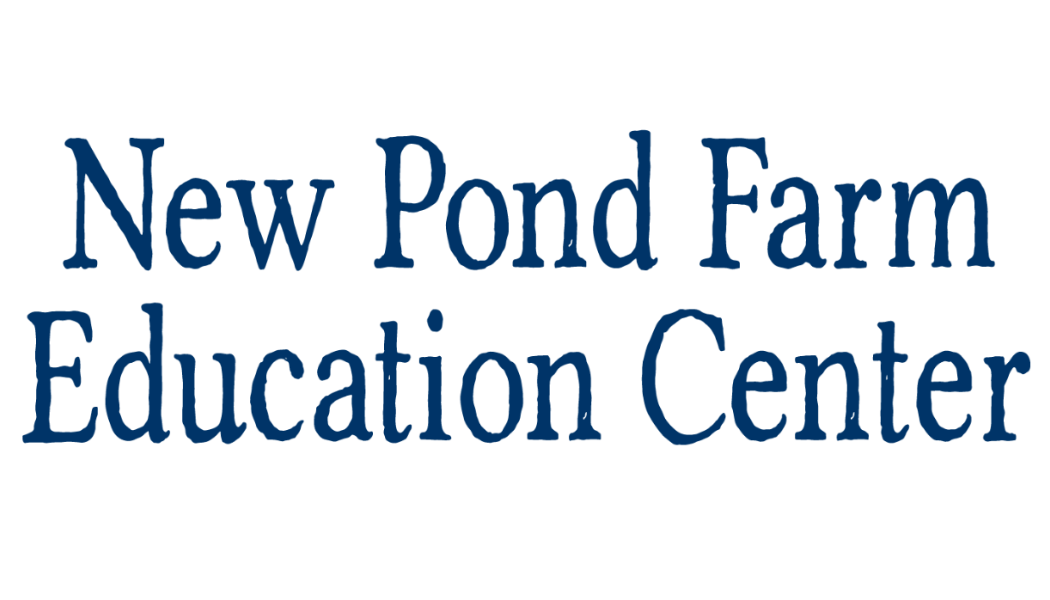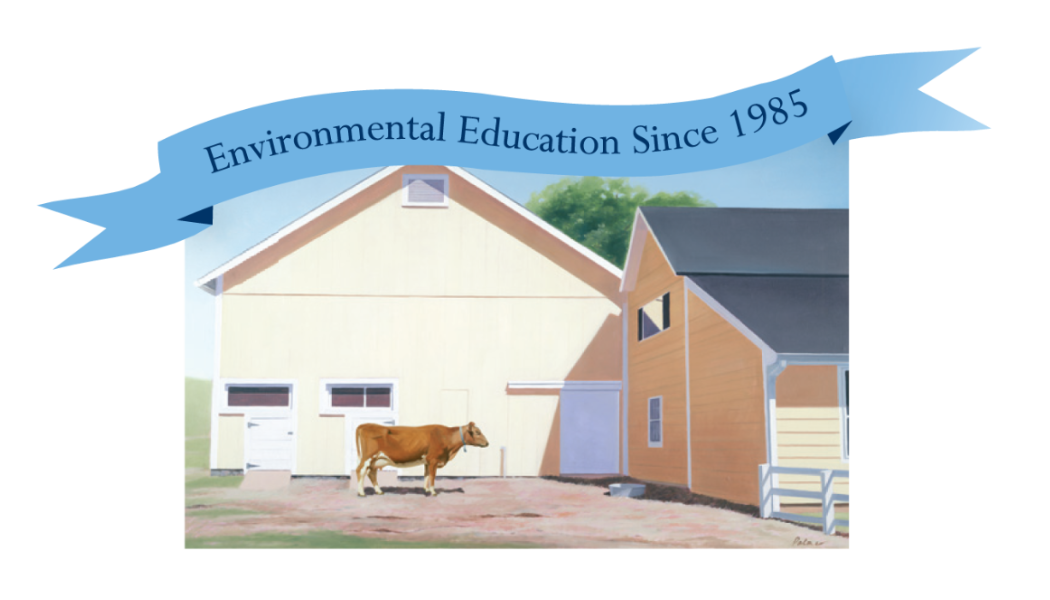Latest News
FOLLOW US!

3,915
New Pond Farm Education Center
Environmental Education Center and small working farm.
1 week ago
🌾Trivia Tuesday🌾![]() As we pause our haying schedule to let the fields regrow for second cutting, let’s explore the science behind why first and second cuttings differ and what that means for animal nutrition.
As we pause our haying schedule to let the fields regrow for second cutting, let’s explore the science behind why first and second cuttings differ and what that means for animal nutrition.![]()
![]() 🌾 First Cutting Hay
🌾 First Cutting Hay![]() Timing: Harvested from the initial spring growth, typically in late May or early June.
Timing: Harvested from the initial spring growth, typically in late May or early June.![]() Plant Maturity: Grasses and legumes (like timothy or orchardgrass) are more mature, meaning they’ve developed thicker stems and more seed heads.
Plant Maturity: Grasses and legumes (like timothy or orchardgrass) are more mature, meaning they’ve developed thicker stems and more seed heads.![]() Nutritional Content: Because the plant has diverted energy into making seeds first cutting hay is generally lower in protein and digestibility, and higher in fiber.
Nutritional Content: Because the plant has diverted energy into making seeds first cutting hay is generally lower in protein and digestibility, and higher in fiber.![]() Appearance: It’s usually lighter in color and feels coarser or more brittle.
Appearance: It’s usually lighter in color and feels coarser or more brittle.![]()
![]() 🌱 Second Cutting Hay
🌱 Second Cutting Hay![]() Timing: Harvested from regrowth in mid to late summer.
Timing: Harvested from regrowth in mid to late summer.![]() Plant Maturity: Plants are younger and more vegetative with fewer seed heads and finer stems.
Plant Maturity: Plants are younger and more vegetative with fewer seed heads and finer stems.![]() Nutritional Content: The softer texture and higher leaf-to-stem ratio make it richer in protein, energy, and minerals
Nutritional Content: The softer texture and higher leaf-to-stem ratio make it richer in protein, energy, and minerals![]() Appearance: Typically darker green, a sign of higher nutrient density.
Appearance: Typically darker green, a sign of higher nutrient density.![]()
![]() Why is there such a significant difference in the texture and nutritional value between first and second cutting hay? Answer what you think in the comments!
Why is there such a significant difference in the texture and nutritional value between first and second cutting hay? Answer what you think in the comments!![]()
![]() Photo credits to Board Member Bruce Ward and his drone!
Photo credits to Board Member Bruce Ward and his drone!
2 weeks ago
🌾Farm Friday🌾![]() Week 6 of our Hay Series: Filling the Barn
Week 6 of our Hay Series: Filling the Barn![]()
![]() We’ve made it to the final stage in our haymaking journey: unloading and storing the bales in the hay lofts of the barn. Once the full wagons are carefully driven back to the barn at New Pond Farm, it’s time to fill those empty lofts.
We’ve made it to the final stage in our haymaking journey: unloading and storing the bales in the hay lofts of the barn. Once the full wagons are carefully driven back to the barn at New Pond Farm, it’s time to fill those empty lofts.![]()
![]() Using a hay elevator, we can efficiently transport the bales from ground level up into the loft. There, a team of 3–4 workers work together to stack each bale tightly and securely, maximizing every inch of space. When done properly, the lofts in our Main Barn can hold up to 1,500 bales! Once that space is full, we move to the Lower Barn for additional storage.
Using a hay elevator, we can efficiently transport the bales from ground level up into the loft. There, a team of 3–4 workers work together to stack each bale tightly and securely, maximizing every inch of space. When done properly, the lofts in our Main Barn can hold up to 1,500 bales! Once that space is full, we move to the Lower Barn for additional storage.![]()
![]() This carefully stacked hay will now remain safely tucked away until late in the season, when the pastures no longer provide enough nourishment for our cows, and hay once again becomes their main food source.
This carefully stacked hay will now remain safely tucked away until late in the season, when the pastures no longer provide enough nourishment for our cows, and hay once again becomes their main food source.![]()
![]() Thank you for following along on our journey to the perfect bale! We hope you’ve enjoyed learning how we prepare and store feed to keep our cows full, happy, and healthy. Now, we wait for the fields to regrow and begin the entire process again, this time for second cutting hay!
... See MoreSee Less
Thank you for following along on our journey to the perfect bale! We hope you’ve enjoyed learning how we prepare and store feed to keep our cows full, happy, and healthy. Now, we wait for the fields to regrow and begin the entire process again, this time for second cutting hay!
... See MoreSee Less
2 weeks ago
Are your middle schoolers looking for something to do the week of July 14th? Join us for our newest summer program. Wayfinder campers will become Junior Naturalists through outdoor activities that will challenge their minds and inspire curiosity. They even have the opportunity to spend the night at camp! 🏕️![]()
![]() For more information and registration visit newpondfarm.org
For more information and registration visit newpondfarm.org![]()
![]() #newpondfarmeducationcenter #reddingct #handsonprogram #outdoors #summercamp #reddingct #newpondfarmeducationcenter #NewPondFarm
... See MoreSee Less
#newpondfarmeducationcenter #reddingct #handsonprogram #outdoors #summercamp #reddingct #newpondfarmeducationcenter #NewPondFarm
... See MoreSee Less
New Pond Farm Education Center
added 2 new photos.
2 weeks ago
🐮Trivia Tuesday🐮![]() Milk production on the farm is slowly beginning to increase, and it’s all thanks to two recent arrivals! Earlier this month and just last week, we welcomed two healthy bull calves. Their mothers, Beauty and Happy, are now part of our milking herd. Like all mammals, cows only begin producing milk after giving birth, so each new calf means a new cow contributing to our daily milk supply.
Milk production on the farm is slowly beginning to increase, and it’s all thanks to two recent arrivals! Earlier this month and just last week, we welcomed two healthy bull calves. Their mothers, Beauty and Happy, are now part of our milking herd. Like all mammals, cows only begin producing milk after giving birth, so each new calf means a new cow contributing to our daily milk supply.![]()
![]() This week’s trivia is all about breed identification. Based on their coloring, can you guess what breed Beauty (black and white) and Happy (red and white) belong to? Share your answers in the comments and test your knowledge of dairy breeds! And if you’re visiting the farm, be sure to stop by the barn to meet our newest calves and their hardworking moms.
... See MoreSee Less
This week’s trivia is all about breed identification. Based on their coloring, can you guess what breed Beauty (black and white) and Happy (red and white) belong to? Share your answers in the comments and test your knowledge of dairy breeds! And if you’re visiting the farm, be sure to stop by the barn to meet our newest calves and their hardworking moms.
... See MoreSee Less
New Pond Farm Education Center
added a new video.
3 weeks ago
🌾Farm Friday🌾 ![]() Week 5 of our Hay Series: Loading Wagons
Week 5 of our Hay Series: Loading Wagons![]()
![]() Our hay has come a long way, from standing tall and lush in the field to being tightly baled and lined up in rows, ready for transport. But even the most perfectly formed bales won’t help feed our cows if they’re left out in the elements. Exposure to rain, sun, and ground moisture can quickly degrade hay quality, which is why timely collection is essential.
Our hay has come a long way, from standing tall and lush in the field to being tightly baled and lined up in rows, ready for transport. But even the most perfectly formed bales won’t help feed our cows if they’re left out in the elements. Exposure to rain, sun, and ground moisture can quickly degrade hay quality, which is why timely collection is essential.![]()
![]() This is where teamwork becomes critical. Up until this point, Farmer Mike has managed the fieldwork on his own: mowing, tedding, raking, and baling. But now we bring in extra hands to get the job done efficiently. As the tractor pulls one of our two wagons slowly along the rows, workers on foot lift and toss the bales onto the wagon bed. There, one or two team members carefully stack the bales. Proper stacking is key as it prevents shifting during transport and allows us to maximize space. When loaded correctly, each wagon can carry around 150 bales, meaning a full round-trip brings nearly 300 bales back to the barn.
This is where teamwork becomes critical. Up until this point, Farmer Mike has managed the fieldwork on his own: mowing, tedding, raking, and baling. But now we bring in extra hands to get the job done efficiently. As the tractor pulls one of our two wagons slowly along the rows, workers on foot lift and toss the bales onto the wagon bed. There, one or two team members carefully stack the bales. Proper stacking is key as it prevents shifting during transport and allows us to maximize space. When loaded correctly, each wagon can carry around 150 bales, meaning a full round-trip brings nearly 300 bales back to the barn.![]()
![]() While it might seem like we’re finished after so many steps, there’s still one final (and very important) phase to go. Ensuring that hay remains in excellent condition for winter feeding takes one more round of careful handling. Stay tuned next week to learn how we store and protect our hay to keep it fresh and nutritious for our cows all year long!
... See MoreSee Less
While it might seem like we’re finished after so many steps, there’s still one final (and very important) phase to go. Ensuring that hay remains in excellent condition for winter feeding takes one more round of careful handling. Stay tuned next week to learn how we store and protect our hay to keep it fresh and nutritious for our cows all year long!
... See MoreSee Less


